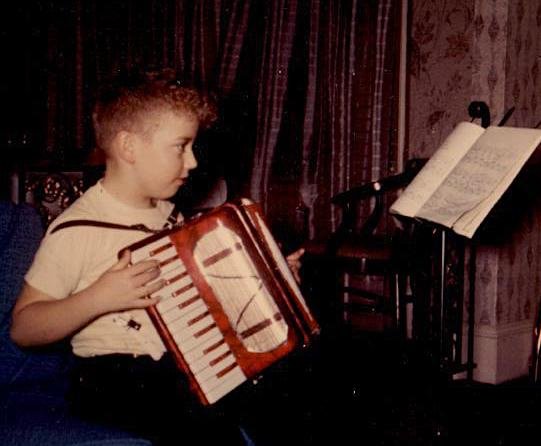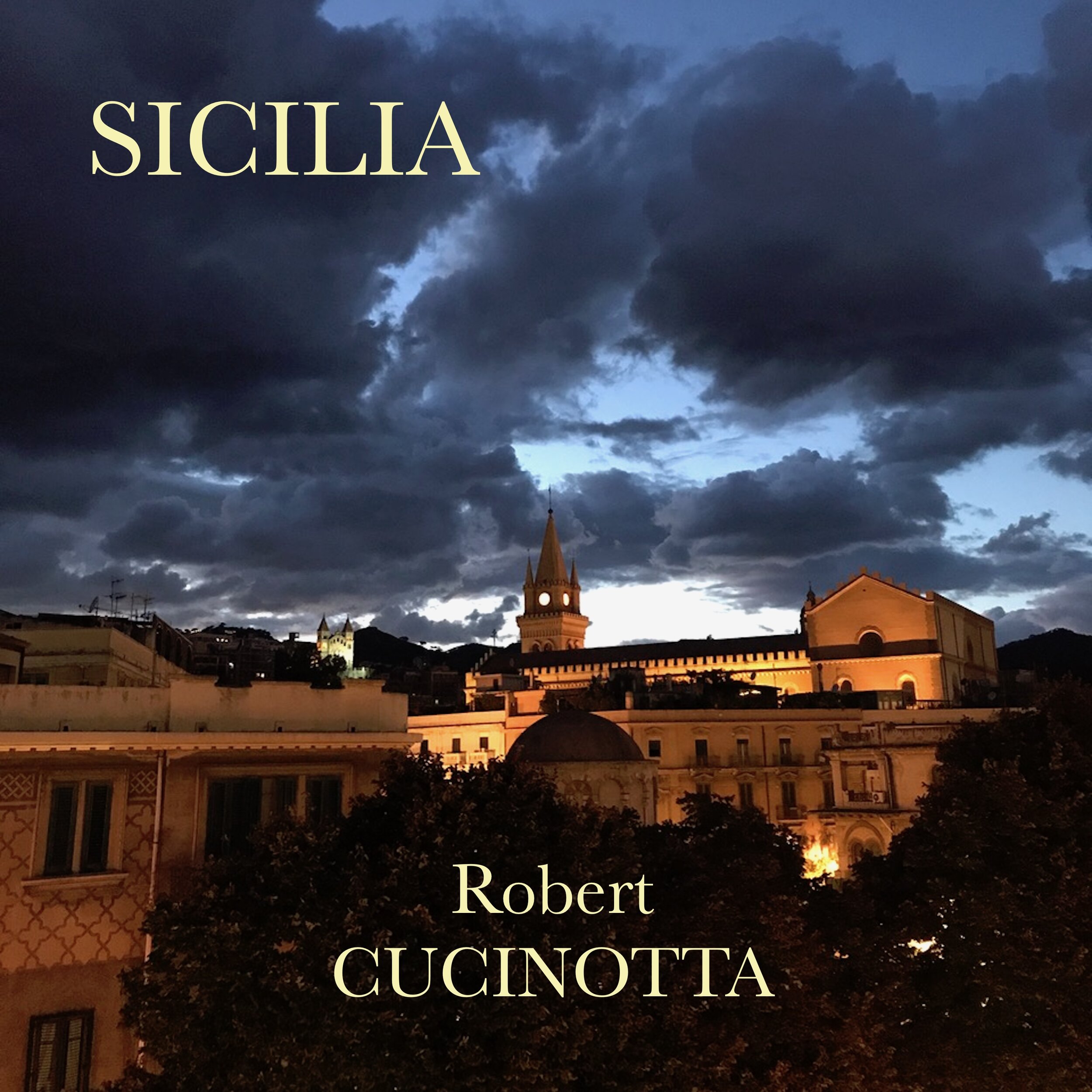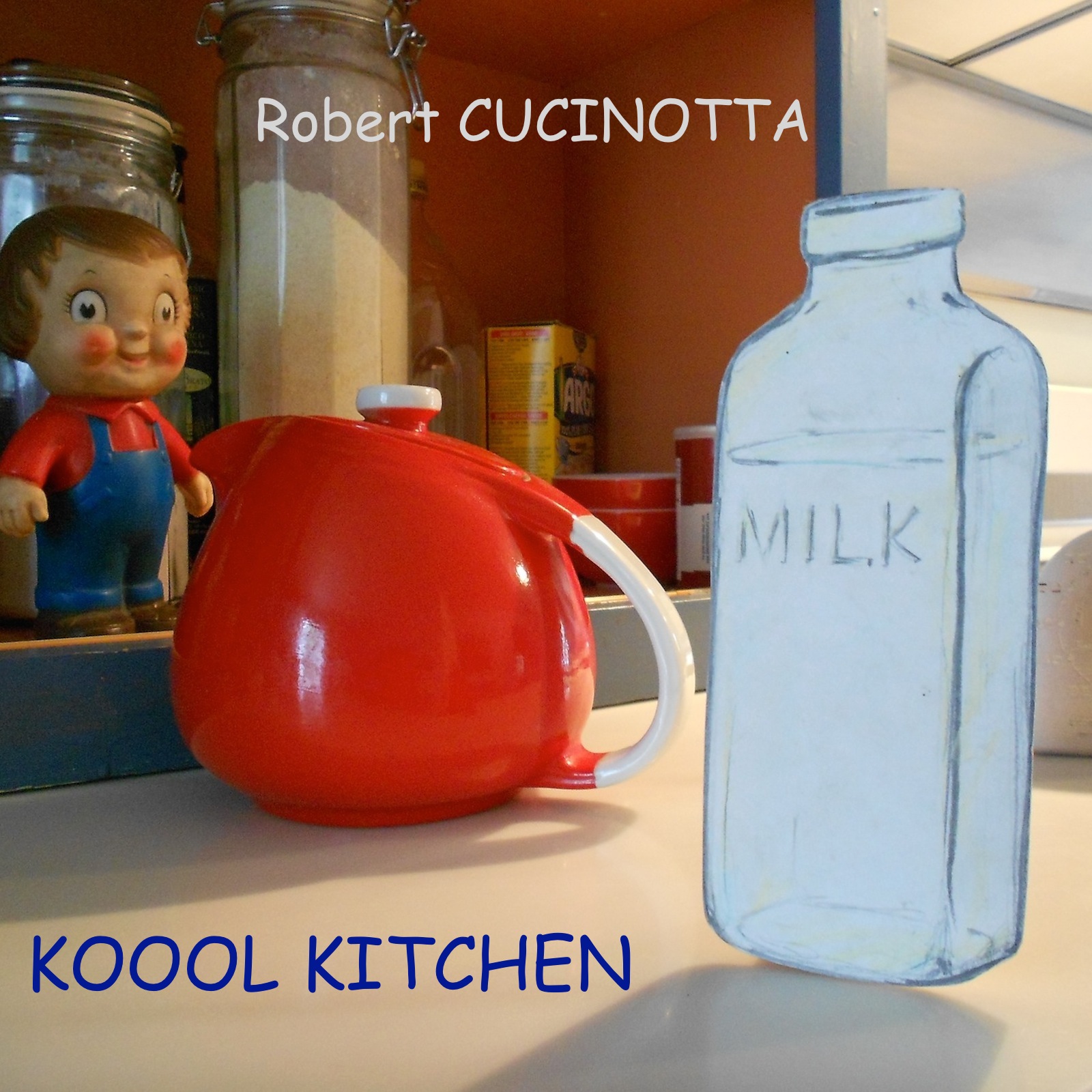Moog modular synthesizer at the Brooklyn College Electronic Music Studio in the 1970s.
DISCOGRAPHY
Available on iTunes, Apple Music, Spotify, Amazon, YouTube and in many other digital stores.
YOU ONLY LIVE TWICE (2023)
You Only Live Twice (2023) is my cover instrumental of John Barry’s theme from this 1967 James Bond film. I was intrigued to learn recently that the British composer had wanted the then up-and-coming young singer, Aretha Franklin, to perform this song. (Imagine that!!!) However, the film’s American producer, Albert “Cubby” Broccoli had a bigger name in mind: his friend, Frank Sinatra. Frank declined the offer, but convinced the producer to use his daughter, Nancy, instead. I wrote this arrangement, set for solo piano and wordless men’s chorus, to explore how this beautiful theme may have sounded if “Ol’ Blue Eyes” had accepted Cubby’s offer.
FANTASY FOR VIBRAPHONE (2023)
Fantasy for Vibraphone (1976) was one of my first works to combine the more academic, dissonant sounds of “uptown” music with the more tonal, minimalist style of the “downtown” composers such as Philip Glass and Steve Reich. I composed it for percussionist Larry Spivack who premiered it in Juilliard's Paul Recital Hall in 1977 and later performed it in 1983 at Bargemusic, the floating concert hall at the foot of the Brooklyn Bridge.
SOME EVIDENCE OF DREAMWORK (2023)
Listeners may want to approach this atonal experimental work as the fusion of my favorite music of the early 1970’s including: hard rock, the craggy dissonant works of American composer Elliott Carter, the jazz/rock of Frank Zappa, the multiphonic woodwind sounds of Bruno Bartolozzi, and (as a descendant of a brass-worker from Birmingham, England) a touch of heavy metal.
Some Evidence of Dreamwork was composed in 1974 after I was invited to submit a short work for a January 1975 reading session at Brooklyn College by the Dorian Wind Quintet. Its title was influenced by my study at the time of the works of C.G. Jung., especially his Memories, Dreams, Reflections. This single was produced using virtual solo instruments developed at IRCAM, Pierre Boulez’s research facility in Paris.
CONCERTINO (2023)
The music in this single, CONCERTINO, was originally composed as a quintet in 1974 for a dance work, Windhoppers, choreographed by Karen Mullin. It was performed in Manhattan at the Theater of the Open Eye, a venue founded in 1972 by dancer-choreographer Jean Erdman and her husband, mythologist Joseph Campbell.
A little background - the concertino was the group of soloists that played against a small string orchestra within the baroque concerto grosso. Later, in the 19th and 20th centuries, the term was used to describe a shorter free form work in one movement, often with sections of varying speed and character.
Both definitions of concertino apply here with this new version of my work: a short movement (8:27) in varying tempi, now set for oboe, trumpet, trombone, marimba, drum set and string orchestra. This recording was produced digitally using virtual instruments.
BHAVA (for Rudhyar) (2022)
In the late 1970’s, I could often be found in the Weiser Bookstore in lower Manhattan, looking for something new to read. Known mostly for its offerings on the occult and comparative religion, it was here that I discovered the books of Dane Rudhyar, including his 1977 work, Culture, Crisis and Creativity and the Weiser reprint of his 1928 book, The Rebirth of Hindu Music. Born Daniel Chennevière in Paris in 1895 and educated at the Sorbonne and the Paris Conservatoire, the young musician moved from the Old to the New World in 1916. As part of his new beginning, he had left everything behind him including his family name. He adopted a new name, Rudhyar, (from the old Sanskrit root rudra) and actively researched ancient non-Western civilizations, Asian musics and esoteric philosophy.
I met the ultra-modern composer, philosopher and astrologer at the Brooklyn Academy of Music in November 1979, and we corresponded until 1983. I composed Bhava in 1978 and dedicated it to Rudhyar. In Hindu music, bhava refers to the deep mood of devotional worship conjured by specific sounds. In BHAVA (for Rudhyar), the sounds of the two movements, The Fire of Aries and The Mysteries were produced digitally using a virtual piano.
Cover art from CORNER TANGO, charcoal, by Karen Kucharski.
TANGO FANTASY (2022)
TANGO FANTASY, is another of my works that straddles both classical and popular styles, and acoustic and electronic music. Originally composed in 2006 for solo piano and inspired by the piano sonatas of Beethoven, it was premiered and performed by concert pianist Justin Kolb as Tango quasi una Fantasia.
Tango Fantasy, my ‘performance’ of Tango La Nacional, A Sentimental Tango and The Rat’s Tango was produced digitally using a virtual piano instrument created in the Abbey Road Studio.
NIGHT MUSIC IN CENTRAL PARK (2022)
NIGHT MUSIC IN CENTRAL PARK (2021), a free arrangement for piano of You and the Night and the Music (1934) and Dancing in the Dark (1931), is my tribute to the music of Arthur Schwartz. Born in Brooklyn in 1900, Schwartz was a major American composer, and a friend of George and Ira Gershwin. The mention of Central Park in the title and the inclusion of the sound of a horse drawn carriage are references to the famous Fred Astaire/Cyd Charisse scene in Vincent Minelli’s 1953 film, The Band Wagon, which includes an orchestral version of Dancing in the Dark. I was introduced to this beautiful song as a young boy studying accordion in south Brooklyn. This single was produced digitally using virtual concert piano, computer voices and FX.
My first accordion.
IT’S ABOUT TIME (1998) [2022]
This single, IT’S ABOUT TIME, is a work for standard drum set, composed in 1998 and premiered at the Canberra School of Music of the Australian National University in 2002 by percussionist Gary France. The title has a double meaning: one, signifying my return to writing for solo drum set, 22 years after my 1976 work, “The sky is waiting…”, and two, a reference to the use of polyrhythms and tempo modulation throughout the composition. Like my earlier work, The Great Bridge, for two drum sets (1981), every note and instrument is specified in standard drum set notation. Some revisions were made during the production of this recording for virtual drum set including the addition of one mounted tom-tom.
TRIANGULATION (1974) [2021]
This single, TRIANGULATION (1974) is a recording of the first performance in 1975 0f this early work of mine for six timpani and electronic tape. The three sections of this composition were written during the summer of 1974 for percussionist Matthew Posnick while I was working in the Brooklyn College Electronic Music Studio. The timpani part was notated in a combination of conventional and proportional notation with some sections of improvisation. Electronic sounds which appear as triangle waves in an oscilloscope were the basic building blocks of the tape, which was realized using the studio’s Moog modular synthesizer. Triangulation was published by Morris “Arnie” Lang (Lang Percussion) in May, 1975.
ANTHEM(S) (2021)
The single, ANTHEM(S) is a paraphrase, a reworking or free arrangement of the well-known melodies and text of America (My Country, ‘Tis of Thee) (1831), and of America the Beautiful (1893). It is scored for a virtual ensemble of computer voices, wordless chorus and string quartet. The texts were written by Samuel Francis Smith and Katherine Lee Bates.
WAGNER NIGHT AT BRIGHTON BEACH (2020)
WAGNER NIGHT at Brighton Beach is a digital melodrama freely arranged from the first scene of Richard Wagner’s, Die Walker. It was written in 2020 in the spirit of Liszt’s concert paraphrases and in appreciation of Joseph Horowitz’ 1994 book, Wagner Nights. Attracted to Wagner’s extended cello solo in this scene, I decided to score his beautiful vocal and orchestral music for cello and piano with two computer voices delivering an English translation of his lyrics.
SICILIA (2018)
SICILIA is a new two-track single that addresses my interest in my Sicilian roots.
SICILIANU (The Lesson) featuring speaker Gaetano Cipolla explores the siciliano form that was developed by baroque Sicilian-born Alessandro Scarlatti and later used by Bach, Mozart, Brahms, etc. The text is written in a combination of English and Sicilianu, the original language of my paternal family. During the work, voices recite numbers, days of the week, months, etc. as if practicing for a sicilian lesson. However, the exercises contain descriptors of the horrible earthquake and tsunami that destroyed most of Messina, Sicily on Monday, December 28, 1908 at 5:20 in the morning.
SAETA (1980) is an early work of mine in its original setting for clarinet, guitar, vibraphone, marimba and cello that I believe expresses the multicultural experience that is Sicily.
My brother and I watching TV in the early fifties.
LIFE ON THE SCREEN (2016)
In this release, I have returned to my roots in electronic and computer music. Life on the Screen is a short "imaginary soundtrack" or audio play whose first track, Docking Sequence evokes 1980's sci-fi movies and industrial music. The second track, TV on the Beach celebrates cyberpunk fiction and is narrated by a combination of synthesized voices and by my wife, poet Sharon Israel.
Whitby Abbey in Yorkshire. The view of the Abbey from his bench in Whitby inspired Bram Stoker to use the town as the setting of part of his classic gothic tale.
DRACULA: Harker's Journal (2014)
My new album, DRACULA: Harker's Journal is a thirty-minute adaptation of the first four chapters of Bram Stoker's classic. This original score expands on my music and sound design for a 2013 production of the play, Dracula by Steven Dietz at the Phoenicia (STS) Playhouse. It includes text from Stoker's 1897 gothic novel. All voices, instruments (guitar and strings), and effects are generated from digital samples. During the production, I played all music and effects from my iPod while seated in the back of the audience. Occasionally, someone in the audience would start talking to me, thinking that I was just checking my email!
KOOOL KITCHEN (2013)
This single, KOOOL KITCHEN, explores cool jazz, baking and pound cake. The music is derived from my earlier work, Night Kitchen (1991) which was written for the Beldames, three women singers and piano. It was a setting of one of my son's favorite books, Maurice Sendak's classic work, In the Night Kitchen. It was premiered in 1991 at a concert of music by Brooklyn composers at the historic Flatbush Dutch Reformed Church in Brooklyn.
This newer version, Koool Kitchen, is a tribute to my mother who was known by many for her wonderful pound cake. All spoken voices, and the instrumental octet (two trumpets, trombone, vibraphone, piano, jazz guitar, double bass and drum set), are generated from digital samples.
DIVERTIMENTO FOR MR. BROOKS (2013)
This album was inspired by the children's book, Freddy the Detective by Walter R. Brooks. In this instrumental version, all of the songs, dances and incidental music for a 2004 theatrical production have been created using a computer-generated ensemble of virtual instruments, animals, synthesized voices and sound effects.
Walter R. Brooks (1886-1958), the writer of 26 Freddy the Pig books and the creator of Mister Ed, was the former owner of our house on Main Street in Roxbury, NY. In 1999, I happily accepted a commission to compose an electronic score for Sandra Fenichel Ascher's Freddy, the King of Detectives, an adaption of Brooks' book. The play was produced by the Open Eye Theater in Margaretville, NY in 2004 and by the DreamWrights Youth & Family Theater in York, PA in 2006.
SAMPLE CASE (2012)
Sample Case is an eclectic mix of percussion, instrumental, electronic and ambient works.
Commissioned and premiered by the Conservatory Percussion Ensemble at Brooklyn College, TOCCATA (1986) was influenced by my work at the time with MIDI synthesizers and digital delay units. It is dedicated to Morris "Arnie" Lang who conducted the premiere at Levinson Theater on May 18, 1986. Revised for a percussion quintet of mallet instruments (2010), the work here is presented by an ensemble of sampled instruments returning it back to its original digital world.
THE HIVE (2012), is a two-minute electronic soundscape that deals with the buzzing traffic sounds created by the vehicles driving over the steel grid embedded in the roadway of the Brooklyn Bridge. Actual audio clips on the bridge reveal a similarity to the sound of buzzing bees. These are combined with actual recordings of bees and ambient noise of New York harbor.
THE GREAT BRIDGE, for two drum sets (1981) is dedicated to the Roebling family and all the builders of the Brooklyn Bridge. It was formally premiered by Larry Spivack and Jason Cirker on November 1, 1983 at Bargemusic, the floating concert hall docked at Fulton Ferry in Brooklyn beneath the Great Bridge. The 6.5 minute work uses canons, panning and a somewhat jazzy rhythmic theme in a quasi-rondo form.
FLASHLIGHT (2012) was originally composed for a radio show spot on WIOX, our local community station.
INTROITUS, for brass quintet (1981) was originally written for a reading session by the American Brass Quintet which performed the work at Whitman Auditorium, Brooklyn College. Inspired by early antiphonal psalmody, the performance requires some physical separation of the players into three groups.
INVOCATION, for marimba and string orchestra (2010) is a one movement, ten-minute piece that gradually gets louder and accelerates employing what is now known as tempo (or metric) modulation. This technique, developed mainly by American composer Elliot Carter (1908-2011) was taught to me by Paul Jacobs, pianist/harpsichordist of the New York Philharmonic, and a champion of Carter's music.
LITTLE MURDERS (2012)
This chamber work for vibraphone, piano and FX was derived from the original incidental music commissioned by the Shandaken Theatrical Society (STS) in Phoenicia, NY for their 2010 production of Jules Feiffer's dark comedy, Little Murders (1967). All voices, instruments, and effects are generated here from digital samples.




















